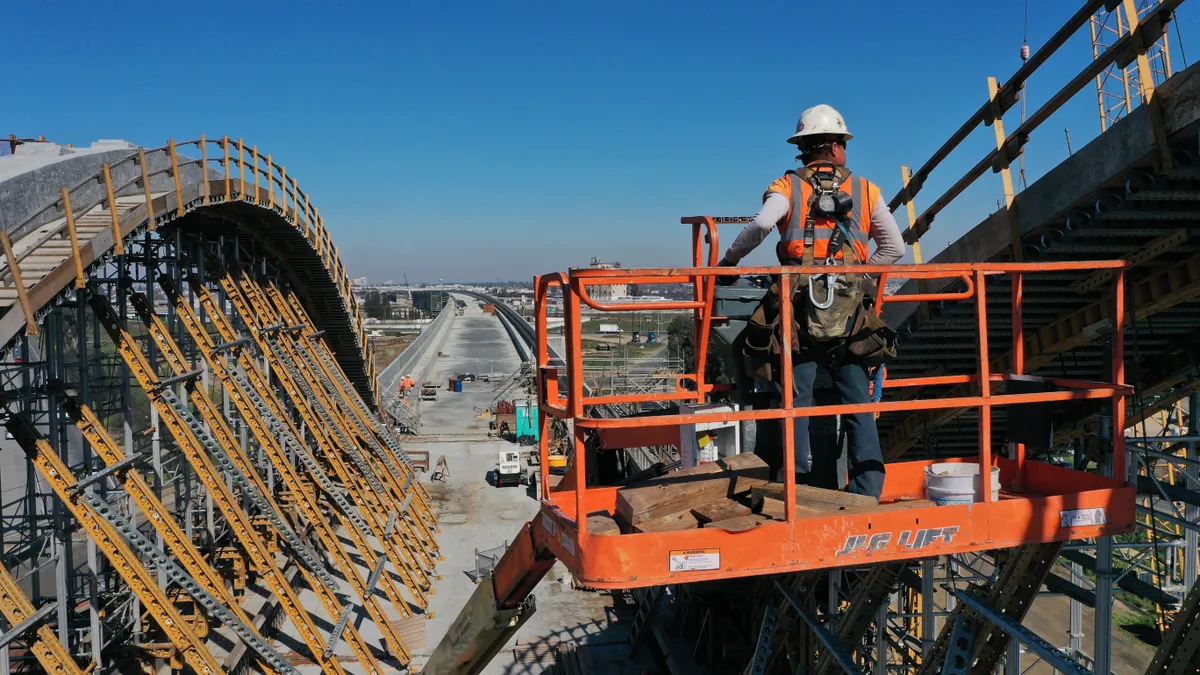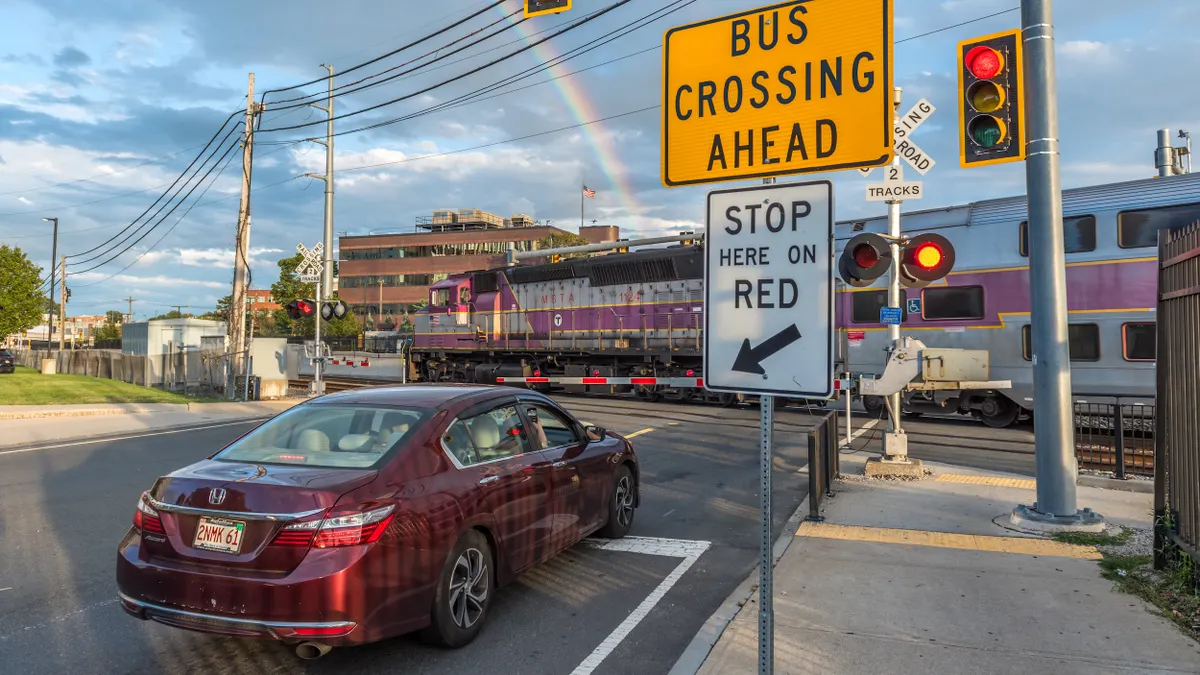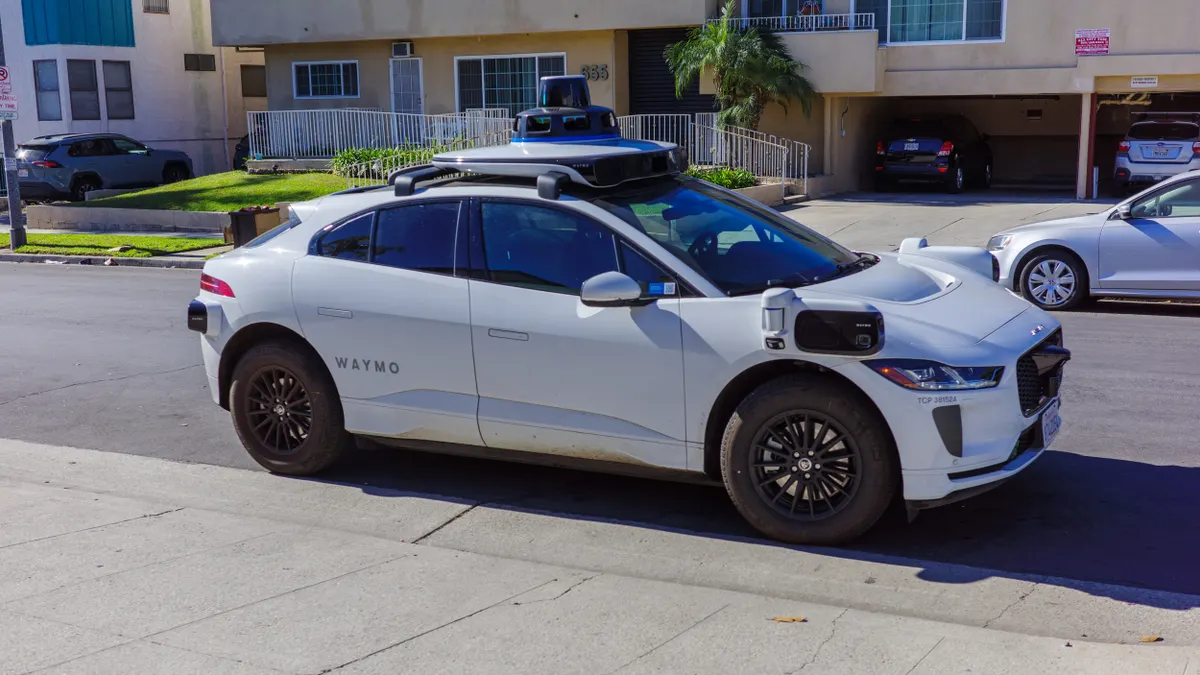Editor's note: This article was originally published in American City & County, which has merged with Smart Cities Dive to bring you expanded coverage of city innovation and local government. For the latest in smart city news, explore Smart Cities Dive or sign up for our newsletter.
Cook County, the most populated county in Illinois, maintains about 1,620 lane miles of pavement, 360 traffic signals, and tens of thousands of street signs spanning about 945 square miles across the Chicagoland area. By comparison, Winnebago County, where I work, covers about 519 square miles of suburban and rural territory, with about one-fifth of the population of Cook County. Here, we are responsible for about 300 lane miles of pavement, 24 miles of shared-use paths, 66 traffic signals, 92 bridges, and more than 1,000 across-road drainage culverts and small bridges.
Regardless of whether a county encompasses a large urban area, sprawling suburb or rural countryside, county officials need visibility into underlying infrastructure. We need to know where pavements, storm sewers, culverts, street signs and other key assets are located; their condition; and whether repairs are needed now or in the near future. This information helps us take proactive maintenance and repair actions, improve efficiency and be mindful of our budgets through careful planning.
However, there is a significant disparity. Larger counties tend to have bigger budgets, larger staffs and access to advanced technologies for collecting detailed GIS data, which aids in day-to-day operations, strategic planning and budgeting. Smaller counties, like mine, have the same data needs, but often face tight budgets and fewer resources. These factors typically prevent us from taking advantage of cutting-edge lidar and imagery technologies, leaving us and other rural and suburban counties asking: “How can we access GIS data to work smarter, be more efficient and save money long-term?”
Going beyond the budget to fund critical projects
In Winnebago County, we found that the key to answering this question was looking beyond our budget to grant opportunities that enable us to accomplish our goals and better serve our citizens. State and federal agencies offer grants that help offset modernization and planning costs. One such program in Illinois is the Statewide Planning and Research Program (SPR), which utilizes federal funds designated for planning and research activities. This is a statewide competitive program where asset management and data collection are eligible categories.
After being awarded SPR funds, our county partnered with NV5 to collect survey-grade lidar and high-resolution 360-degree imaging data — valuable information we couldn’t otherwise afford. We then were able to develop a plan to maximize the GIS data extracted from these data sets for the awarded SPR funds.
The impact of geospatial data
While we have GPS equipment to capture data, our employees could only do survey work during downtimes when there weren’t other pressing projects. Without the data, we were always left wondering, “How can we manage what we can’t measure?”
Under the grant, NV5 conducted surveys with lidar and high-resolution imagery across the county, collecting a wealth of data, including point and line features such as edge of pavement and edge of shoulder lines, driveway lines, centerline of pavement lines, street signs, stormwater catch basins, manholes, mailboxes, inlets, fire hydrants, pedestrian ramps, culverts and more. What would have taken our staff 30 years to do, NV5 completed in nine months, giving us the most accurate and current information about our infrastructure. The final NV5 report for our project states that the accuracy has a range from 5 cm to 20 cm.
More than 90% of the data NV5 collected was new information, presented in a modern digital format we did not previously have. This data is now the foundation for our new asset management system, which is work-order-driven and GIS-based, enabling us to manage various assets from a central location.
The most significant benefits we’ve seen from this data collection are time savings and increased efficiency. For example, the point cloud data collected by NV5 allows us to create ground models for certain types of improvements without the need for traditional topographic surveys. For other types of improvements requiring higher accuracy, survey control can be established using photo identifiable features from the data collected and the point cloud can be adjusted to meet the higher accuracy requirements. We estimate that this method can save us more than 50% compared to traditional surveying methods.
Proactive asset management
Having access to this detailed data has dramatically improved our ability to manage assets. We now have a complete inventory of street signs, helping us comply with Federal Highway Administration (FHWA) and Manual on Uniform Traffic Control Devices (MUTCD) requirements for sign reflectivity. Previously, we relied on public input and maintenance patrols to identify signs needing replacement. Now, we can confidently manage our signage inventory and plan replacements as needed.
Similarly, the data on culverts and storm sewer inlets has been invaluable. Knowing their exact location and condition enables us to budget for maintenance and replacements more accurately. This proactive approach ensures we can address issues before they become major problems, ultimately saving time and money.
Looking to the future
The possibilities for future applications of this data are endless. For example, we are exploring use of point cloud data for engineering projects, such as roadway or intersection improvements. Knowing the data is accurate will allow us to streamline planning and execution of these projects. Additionally, we look forward to enhancing our GIS database with more detailed attributes.
Once fully implemented, this system will allow us to perform complex queries and extract pertinent information quickly. For example, we could track the age and condition of culverts to inform planning decisions and improve budgeting accuracy with respect to capital improvement projects.
We are also exploring other ways to use the data. One is for pavement management. Pavements are our largest maintenance budget item and most expensive asset. During the survey, NV5 extracted pavement edges, which will allow us to accurately estimate repairs and overlays. As we progress in developing our pavement management system, this linework provides a framework to ensure very accurate pavement surface areas across our roadway network. Another use is storm sewer mapping. The NV5 data, combined with field surveys and archived plans, will be valuable in visualizing the storm sewer network under our jurisdiction and helping us comply with the Environmental Protection Agency’s Municipal Separate Storm Sewer System (MS4) stormwater management requirements.
Our experience in Winnebago County demonstrates that even with limited resources, rural and suburban counties can leverage advanced technology to improve infrastructure management. Grants and strategic partnerships are keys to accessing these resources. By investing in data collection and GIS technology, we have laid a strong foundation for proactive asset management and future planning.
Commentary is a space for state and local government leaders to share best practices that provide value to their peers. Email Smart Cities Dive to submit a piece for consideration, and view past commentaries here.
About the Author
Matt Fox is a civil engineer senior at the Winnebago County Highway Department, where he has worked for 22 years. Fox’s responsibilities include plan development to maintain and improve the county’s roadways and ancillary assets. He has also taken a lead role in developing GIS layers with the goal of implementing GIS-based asset management.

















